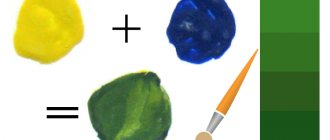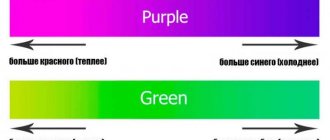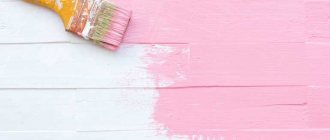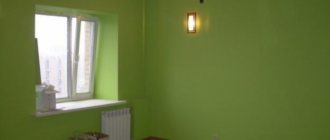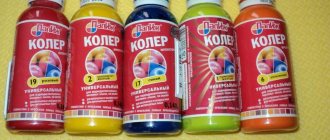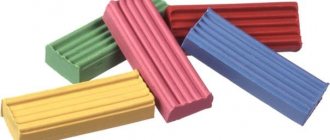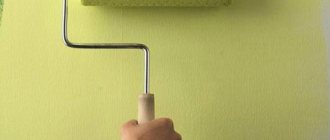What is beige color?
Beige color refers to light brown shades with cream undertones. It can be warm or cold, darker or lighter. The uniqueness of the beige color lies in the variety of its palette, from warm to cold shades:
- sand;
- coffee with milk;
- caramel;
- cream;
- bodily;
- opal;
- ivory, etc.
You can read the article in more detail: how to get ivory color from paints.
It is interesting that the same beige tone is perceived differently by different people.
Pastel colors are actively included in the design of rooms. Soft, warm colors are preferable for classical, neoclassical, modern, Provence or minimalist styles. Furniture, wood, and decorations look impressive and advantageous on a beige background. By varying and selecting shades, you can create a harmonious, comfortable space for living.
shades of beige in the interior
shades of beige in the interior
shades of beige in the interior
shades of beige in the interior
shades of beige in the interior
How to get different shades
To obtain a different palette of beige shades, only 3 colors are often used:
- white;
- havana (gray with a hint of brown) or caramel;
- green.
The process of obtaining an ordinary beige shade looks like this:
- Whitewash is poured into the container. Their share is the largest – 80%.
- Add 20% havana or caramel.
- Add 3 drops of green pigment.
- Stir.
Shades of beige depend on the amount of green paint added. If the beige turns out to be too dark, the situation is corrected by adding white; if it is pale yellow, green pigment is added.
To obtain ivory, that is, white with a yellowish tint, you can use white as the main mass (a snow-white substance without impurities), and a yellow tone as a supplement . Add yellow paint drop by drop, stir well, and constantly coat a sheet of white paper with a brush or stick, checking the result.
The second option to achieve ivory color is to add ocher and dark brown tones in small quantities to the base white.
There are many variations of beige shades. For example, there are tones such as:
- sand;
- opal;
- cream;
- light coffee;
- light caramel;
- wheat
To get the right color scheme, you need to constantly experiment and create your own palette.
How to get beige: work steps and mixing options
Mixing paints to achieve the desired shade is a process that requires patience and determination. Before starting work, you need to know exactly what tone the beige color will be; it can be warm or cold. The choice of dye colors depends on this. Materials, tools and available materials for work:
- paints (white, brown, red, ocher, green);
- small container, wide and shallow for good visibility;
- blending brush;
- test surface.
To obtain a homogeneous mass with the desired properties, it is better to mix paints of the same composition and manufacturer.
tools for mixing acrylic paints
How to get a classic tone
To obtain a beige color from different paints, you need to perform a sequential algorithm of actions:
- combine the white mass with the brown one (1 part brown and 2-4 parts white);
- mix until smooth;
- Paint the test surface and wait until it dries completely.
After applying the paint, the test sample needs to dry in natural conditions. When finished, the shade may vary slightly from the original. As a result, the color can be adjusted with white if a lighter tone is needed, or brown if it is important to get a dark shade.
In order to get a warm shade to the classic white-brown version of the mixture, you can add 1-2 drops of ocher, a drop of yellow or red. If you want a cold tone, then add a little greenery to the main composition.
What other paint mixing options can you use?
In addition to the classic combination of white and brown, there are several more ways to get beige from paints of different colors, even unusual ones:
- Yellow, red, brown, white - yellow with red will give orange, and in combination with brown and white you will get a pleasant beige tone.
- Yellow, white, a drop of pink - gentle and natural.
- White with gold ocher plus a drop of red or brown - cool beige.
- Scarlet, blue, yellow, white - a special combination that gives a natural beige color.
When mixing decorative paints, you need to keep records and fix the proportions. Having worked out the shade on a small amount, it is easy to make calculations for the full volume of painting.
Shades of beige. Universal palette
Instructions for obtaining beige
To make beige at home, you need to follow the instructions and follow the mixing rules.
Necessary materials
To make a beige color using the classic method, you will need the following materials and tools:
- Paints in 2 colors - brown and white.
- A container for mixing components or a painting palette.
- Artistic brushes.
- Stirring stick.
- Coverage to check the result.
You can use a color wheel for different shade options.
Choosing paint
To experiment with the coloring composition, you can try gouache. It is suitable not only for design work and children's creativity, but also for painting.
The material has no unpleasant odor and does not require a solvent; different colors mix well with each other. When diluting, take into account the following factor: wet paint is much brighter than dry paint; when dried, it whitens due to the presence of a chalk additive.
The choice is made on more saturated tones than those that should be obtained on the main coating.
Watercolors are also used for drawing. The paint has a watery structure, making it difficult to mix several colors correctly. The desired result is achieved by gradually adding a small amount of brown tone.
The best paints for tinting are:
- Acrylic.
- Latex.
- Silicone.
- Alkyd.
They are easy to mix, tinted, and after drying they have excellent decorative and strength properties, so any of these beige paints can be used for walls and ceilings indoors and create a beautiful interior in the house.
It is advisable to prepare different colors for testing. For example, you can take these:
- brown;
- green;
- yellow;
- red;
- white;
- pink;
- blue.
Step by step plan
A step-by-step guide to making beige color using the classic method is given below:
- Take brown paint.
- Add white in a ratio of 1:2 or 1:4.
- Stir thoroughly with a brush or stick until smooth.
- For contrast, add 1-2 drops of yellow dye.
- The resulting material is applied to a test coating.
- Wait until the sample dries.
- If necessary, make lightness adjustments.
Getting beige color depending on the type of paint
In repair work, a beige tone can be obtained from any paint, be it water-dispersion, alkyd or polyurethane compositions:
- water-dispersion paints based on acrylic, latex or silicone are of high quality, easy to use, non-toxic, odorless, and dissolve well in water. Acrylic lays flat on the surface and provides a durable, moisture-resistant coating;
- alkyd paint based on an organic solvent, has a pungent odor, provides a durable, elastic, glossy finish;
- polyurethane dye is universal for different types of surfaces, provides a high degree of wear resistance and strength, but the disadvantages are high price and limited selection.
Water-dispersed paints are considered the most affordable, convenient option for obtaining beige shades. They are available in white and tinted with brown pigments.
Learn more about the types of colors and paint tinting.
Paints with organic solvents are sold ready-to-use; the desired color can only be achieved by mixing different colors.
Artistic paints
Mixing paints to create a physical color is often used in various types of artistic activities: painting, applied art, children's creativity. Here, gouache, watercolor, oil or acrylic compositions are most often used.
Painting "Roses" in beige color
Water-based paints are easier to work with. For example, gouache is a good, responsive material that produces beautiful tones. When it comes to acrylic paints, more and more artists have been switching to them lately. They are bright and highly pigmented like oil ones, but less toxic.
You can read the article in more detail: what acrylic paints are and how to work with them.
As for watercolors, sometimes it is enough to dilute ocher or light shades of brown with water to obtain the desired beige tone.
Getting beige color from oil paints is also not difficult. The main thing to remember is that these paints are opaque, take a long time to dry and require the use of special thinners.
Learn more about the features of working with oil paints.
Beige components
This color does not belong to an independent shade. Artists and painters obtain it by mixing several tones. There are three options for tinting the paint in a beige tone. Take:
- brown;
- white;
- yellow.
Other components are possible.
- yellow;
- blue;
- red;
- white.
The simplest option: brown and white. It all depends on the proportions of the components. If you take a larger mass fraction of brown, the saturation is stronger and the shade is darker. If white dominates, the tone softens. When you add pink color, you get a juicy peach shade.
What does milky color look like?
Milky is a shade of white, softer than snow white, but less dark than ivory. ... The color of milk is a neutral shade. This means that he acts unobtrusively and is always comfortable in his presence. Thanks to this, it is used equally by both men and women.
Interesting materials:
How long can parcels stay at the post office? How many seas are there in the whole world? How long can you keep things white? How long can a foreigner live without registration? How long can honey mushrooms be stored? How long can diesel fuel be stored in barrels? How long can you store Google Photos? How long can you keep broccoli in the refrigerator? How long can you keep cooked broccoli in the refrigerator? How long can boiled chanterelles be stored?
Color Mixing Chart
There is a special table that shows which colors to mix to get beige. Using the table it is easier to understand what paints will be needed for mixing work. Of course, you will have to think through the exact proportions yourself, because the shade is influenced by the type of paint and varnish material, as well as the type of base; after drying, the layer can change saturation. But tone correction can be done by adding those colors that were indicated in the table.
Examples of combinations:
- Brown golden type - red, yellow and blue mixed with white;
- Tobacco is obtained by adding yellow, green, scarlet and white;
- Mustard color is obtained by adding black, red, yellow and greenish;
- Classic beige, you will need to mix brown, yellow and white;
- Terracotta includes orange and brown;
- The shade of honey is achieved by combining yellow and dark brown with white;
- Ocher consists of yellow and brown;
- The light type of brown is obtained by mixing yellow and white, black and brown;
- The shade of an egg shell is achieved by mixing yellow with white and adding brown, which will require a small amount.
Using the table it is easier to understand what paints will be needed for mixing work.
What color should be added to get shades from light to dark
There are many options to get other versions of beige; they look more unusual and make it possible to harmoniously blend into the bright color scheme. Having created the necessary dilution so that the saturation of other colors does not cause rapid fatigue from such an interior.
How to mix beige:
- A cool tone can be created by mixing golden ocher and white, the ratio is 1 to 3, after which a little red or brown is added to soften it a little. If the result does not seem cold, then you will need to add a few drops of green;
- Classically, you can mix brown and white, but if you add yellow, you can increase the brightness;
- In yellow you can introduce pink and white;
- The body type can be obtained by an unusual combination. Take blue, red, yellow and white, you also need to add a little gold.
It can be seen that there are a large number of ways to obtain beige. In your work, it is important to start with the introduction of white or brown, to which other colors are added according to the scheme. Proportion affects saturation.
In your work, it is important to start with the introduction of white or brown, to which other colors are added according to the scheme.
